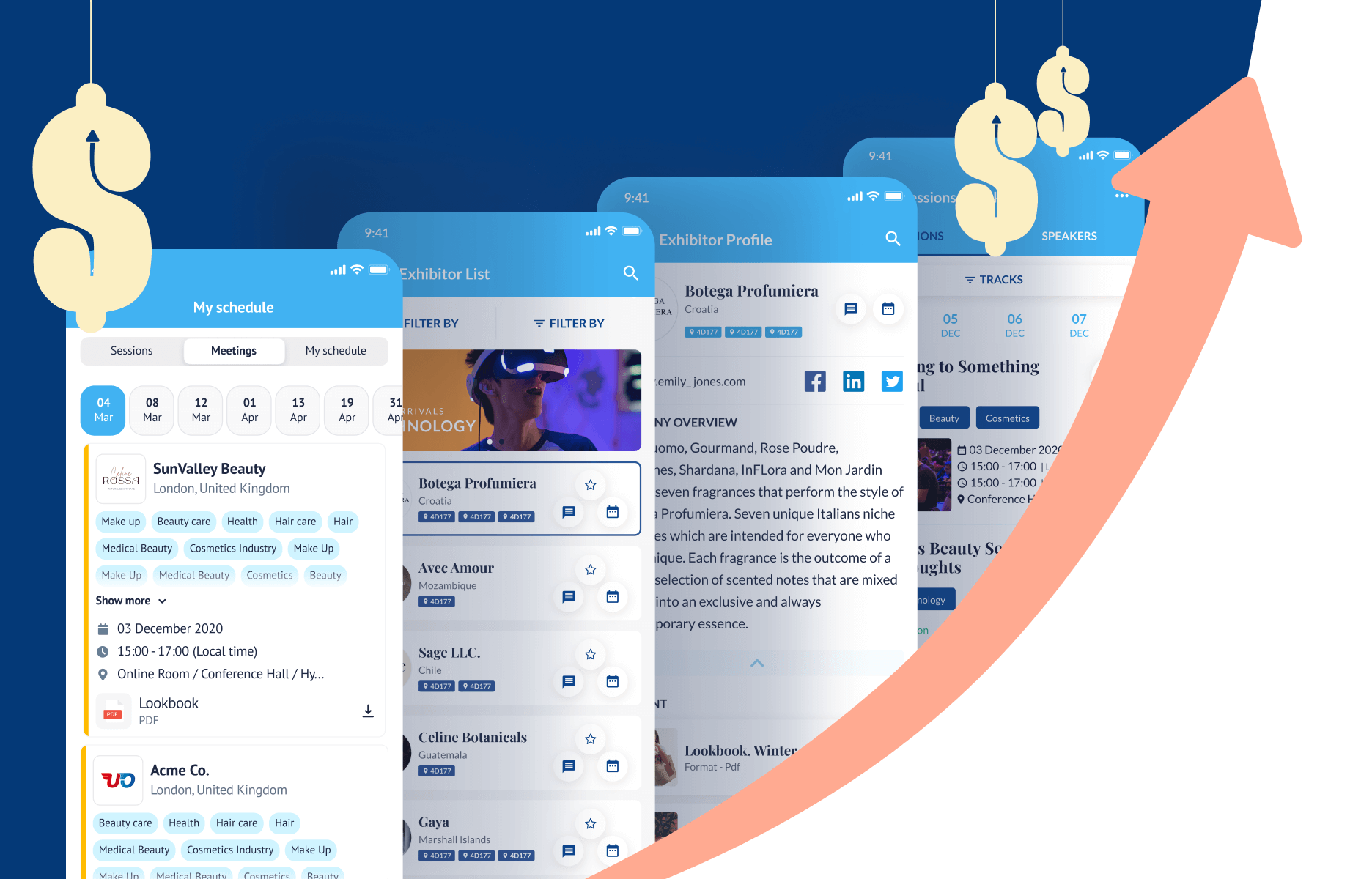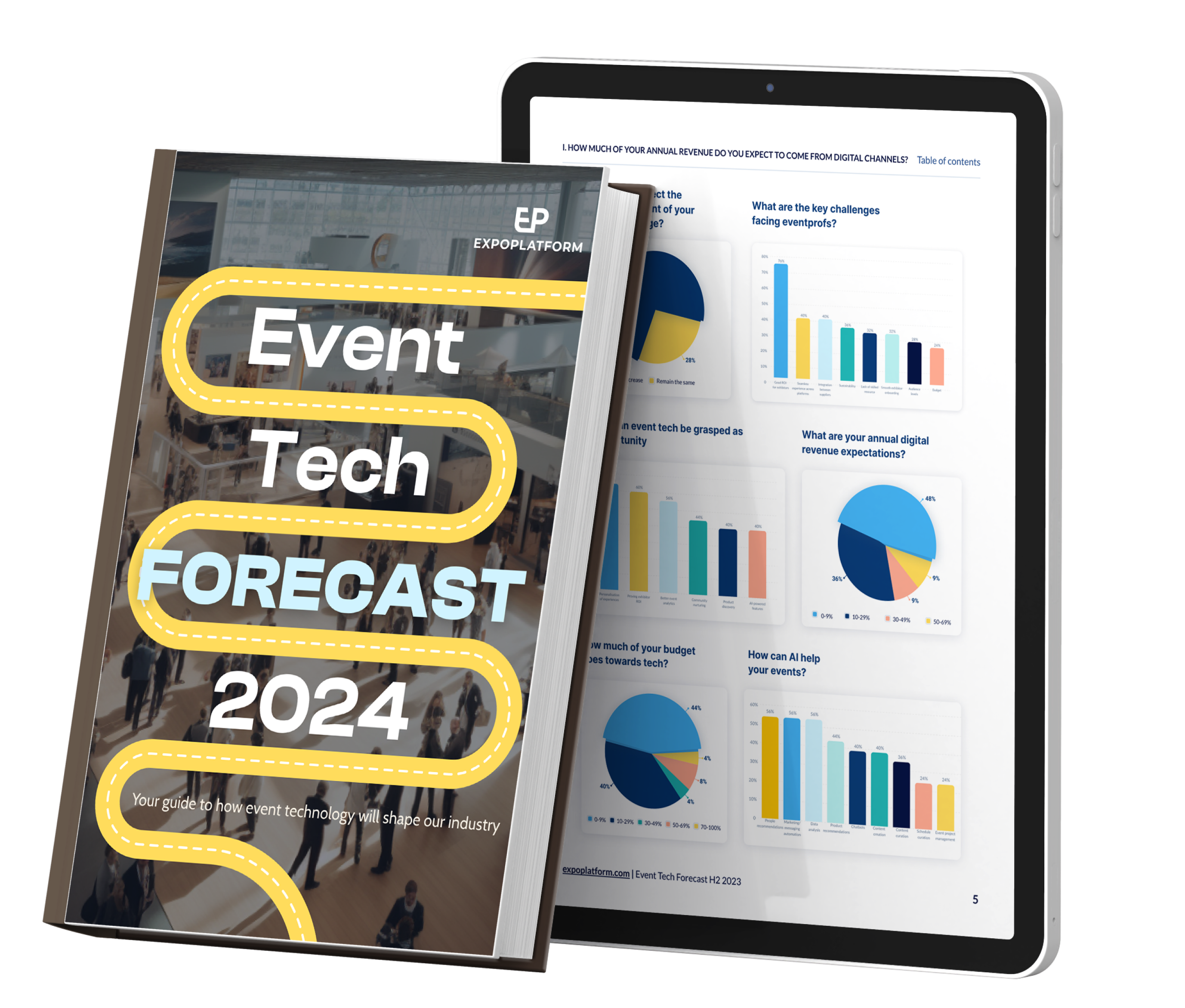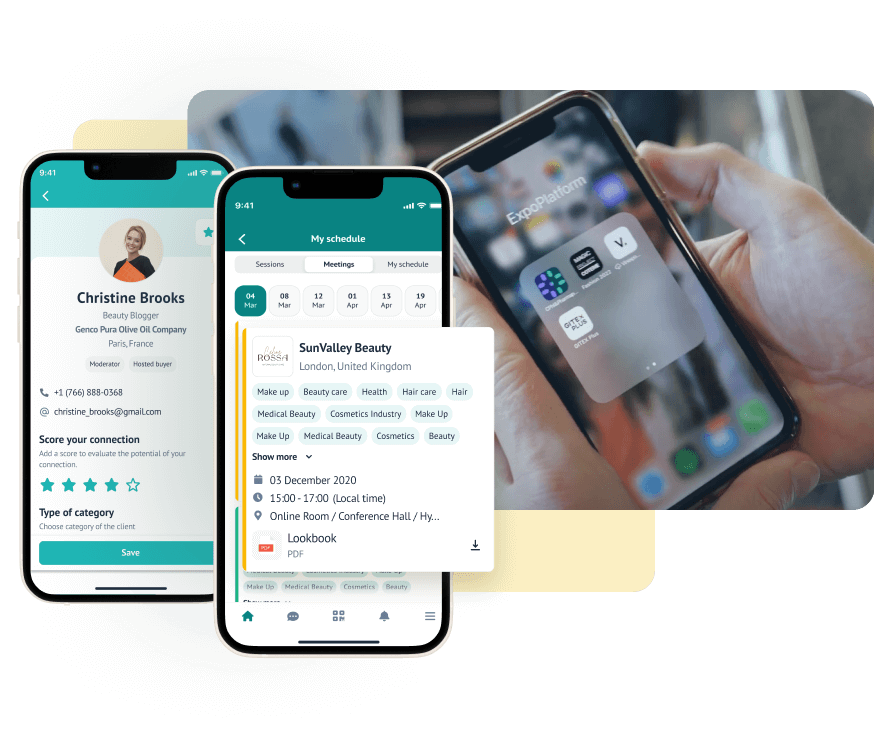
‘New paradigm’ of mobile event app as revenue generator
The exhibition industry is in a “new paradigm” where mobile event app technology can become a crucial revenue generator, according to an industry leader.
Mark Maydon, commercial director at Crowd Connected, has set out his vision for how technology will spearhead innovation through Smart Events – and more specifically data.
This format is an in-person event that uses digital technology to increase the value of the experience for all participants.
A major element of this development will be through data-driven insights which can be gathered and utilised through mobile apps.
Figures from Crowd Connected show a typical exhibition has 65 missed opportunities for every 100 valuable conversations, but the event could be worth 20% more through better wayfinding.
Mark sets out how this mobile app component is no longer just about mapping and navigation, but also “discovering”.
He said: “Historically, mobile apps were frequently viewed as a discretionary cost by the marketing teams of organisers. Consequently, there was a race to the bottom on price and as a result they often had unsatisfactory functionality, limited usefulness and insufficient value to event visitors.
“Unsurprisingly, you got into a horrible vicious circle where the app wasn’t used as much as the organiser would have liked. Then an event’s organiser wonders why they’re spending so much money on the app and cuts the budget – or worse, cuts it entirely.
“But there’s a new paradigm – one where the app is viewed as a revenue generator and the show organiser invests in it. By making it really valuable to the user, the app gets more downloads, and is more widely used at the show.
“The value proposition for this new breed of event app is centred on navigation and discovery: helping visitors do more at the show, meet more exhibitors, get to where they want to on time, or realise that something else they are interested in is there.
“Crucially that increased usage results in hugely valuable data and insight for the organiser. They can monitor and measure footfall across the whole event environment, not limited to one or two components which is typically what you get from scanning or RFID.
“Whole show behavioural analytics allows the organiser to operate a better show – and ultimately an enhanced P&L – because there is insight into which elements of the show are performing well and which aren’t, which exhibitors are attracting footfall and which aren’t and how well the the show as a whole is operating.”

The interview comes as ExpoPlatform announced it has entered into a partnership with Crowd Connected, a UK-based technology provider focused on indoor positioning of smartphones.
Under the partnership, Crowd Connected will provide its full suite of tools integrated into Expoplatform’s platform, making the mobile app location aware for the benefit of organisers, exhibitors and visitors as live shows return post-pandemic.
Relentless march of technology
The coronavirus-enforced hiatus of physical events has resulted in marketing spend being diverted online.
For exhibitors, so-called “Big Tech” such as Google or Facebook provide incredible amounts of data about the value of their advertising investment with them. The B2B events industry has also seen a massive growth in data since 2020, largely driven by the adoption of virtual events and online components.
That enables organisers to see how many sessions have been attended, how long attendees were part of that, where the hot spots were, who has interacted with who and much more.
Crowd Connected’s toolset brings this digital data rigour to the physical environment. This is a fundamental to the Smart Event agenda being pursued by the world’s leading organisers of real-world shows..
The provider’s technology – which is simple to deploy at any show – makes the mobile app more valuable for visitor, exhibitor and organiser through:
- In-app blue-dot navigation and wayfinding, overlaid on an interactive floorplan
- Location-based personalisation and recommendations
- Footfall-based exhibitor performance insight for every stand/booth at a show (via Crowd Connected’s Bluebird product)
- Real time data visualisations such as heatmaps
- Industry leading visitor behavioural analytics
Mark said: “We enable organisers to demonstrate to the exhibitors what return they’re getting on their investment, through the data we collect. We measure brand exposure and brand engagement for every exhibitor stand.
“What we’re helping the organisers do here is using the footfall data to address directly the thorny issue of exhibitor ROI, providing evidence of how well every exhibitor performed at a show.
“This is absolutely critical not just for rebook but across the whole sales cycle. It’s something organisers have been crying out for.”
The rise and rise of personalised consumerism is something which can’t be ignored in the world of B2B events.
All of us are used to being targeted with specific offerings through businesses like Netflix, Amazon or Spotify.
It is now clear that visitors to a trade show expect their experience in a professional capacity to be just as elevated.
Mark said: “We’re witnessing a relentless march of technology. Pre-Covid, many exhibitions were sitting in their comfort zone somewhat.
“They knew how to run a show, but it was, bluntly, an iteration from the early trade shows, such as the Great Exhibition show at Crystal Palace way back in 1851. Technology was largely feared, rather than embraced.
“There hasn’t really been much that has changed. Maybe there’s a bit of scanning, but otherwise it was pretty much the same thing year in, year out.
“Meanwhile smart technology has permeated into almost every facet of our everyday lives – largely through the universal adoption of the smartphone. So why shouldn’t the same apply to an exhibition or trade show?”
Using the mobile event app to gather data
One of Crowd Connected’s major features is its blue-dot navigation technology for any indoor environment.
That means organisers can offer a user experience familiar to us all from Google or Apple Maps. This enables rich data capture which can be used to analyse performance of a show just like these navigation applications.
This all comes as attendees are now much more used to having a phone tell them where they need to be in their personal lives.
Mark said: “The ability for humankind to navigate has been ceded to the computer on our phones. Back when the world was analogue, map reading was a hugely valuable skill.
“Now, your phone tells you where you are, and gets you to where you need to go. -But that doesn’t work indoors because Apple and Google haven’t mapped the temporary show floor environment, while GPS – which is what the phone is relying on for the blue dot – doesn’t work indoors.
“We’re basically replicating that familiar experience for app users at a show. That makes the app really valuable to the visitor, so they’ll use it more.”

He added: “And that’s really valuable to the organiser because the app is gathering more data as app users move around the show floor – even when the app isn’t actively being used. It’s a win-win for everybody.”
Mark sets out how the business model for a typical trade show is about satisfying exhibitors, while charging them for the privilege of being there.
He said: “Organisers are running a matchmaking service where they create value by bringing participants together.
“However, exhibitors are paying much more attention to the return on investment they get from paying to be part of that experience. And visitors are increasingly time poor, and have high expectations. They need to be satisfied too, or they won’t return.”
Using event data
Recent research from ExpoPlatform and the Exhibition Think Tank (ETT) Club show 40% of shows in 2022 will be Smart Events.
More than a third (35%) ranked location tracking as being important or very important. A further 26% rated this as being a medium priority for their business model over the next year.
Meanwhile, ExpoPlatform estimates the amount of data being produced through shows is now 20 times more than it was in 2020, immediately pre-pandemic.
This explosion in information provides organisers with a wealth of insight into how they can shape their offerings and enhance their bottom line – as long as they know how to use it.
Mark references the rapid growth of Big Tech whose success has been based on data.
He said: “If you’re not making business decisions built on data, you’re probably not making the best decisions.
“The leading business organisations in the world are all data driven decision-makers.
“If you think about the really super valuable companies that have been built in the last 20 years – Google, Meta, Apple and all those digital businesses – they’re data businesses.
“Exhibition organisers are rapidly having to adapt to become data businesses. Those that do will win and those that don’t will wither on the vine.”
We hope you enjoyed reading this article and found it useful. At ExpoPlatform, we want to help you build better events and communities. Please get in touch and ask for a demo here. Thank you.
There's more you might like

10 proven strategies to increase event app downloads
Investing in a mobile event app unlocks more ways to engage and monetise. But first, you need to maximise your event app downloads. This article highlights 10 ways organisers can increase event adoption at their shows, using a selection of proven strategies to boost interest. Meanwhile, you can learn how digital tools like mobile apps ...

Event app market to double in value by 2028 – report
The global event app market is set to more than double in value and hit $2.5 billion by 2028, according to a new report. Figures from the Insights Partners show the technology was worth $1.2bn last year but is projected to grow at a CAGR of 14% over six years. It comes as ExpoPlatform research ...

How to use QR codes properly at live events
QR codes are used for so many parts our lives – to access information, pay for goods and services as well as capture contact details. But how do you use these digital tools to improve live events? At in-person shows, QR codes are a convenient way to check in to venues, unlock attendee details and ...


